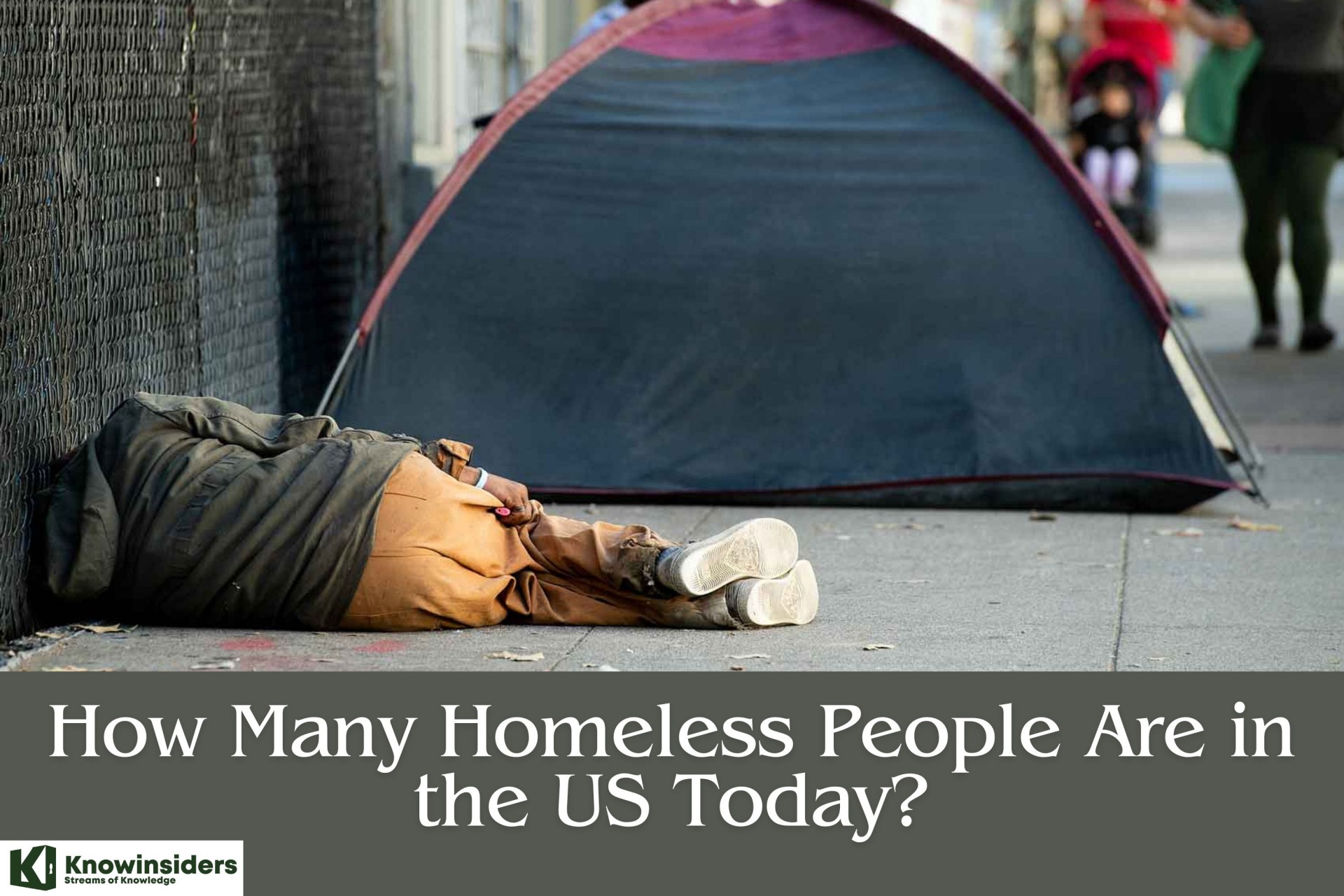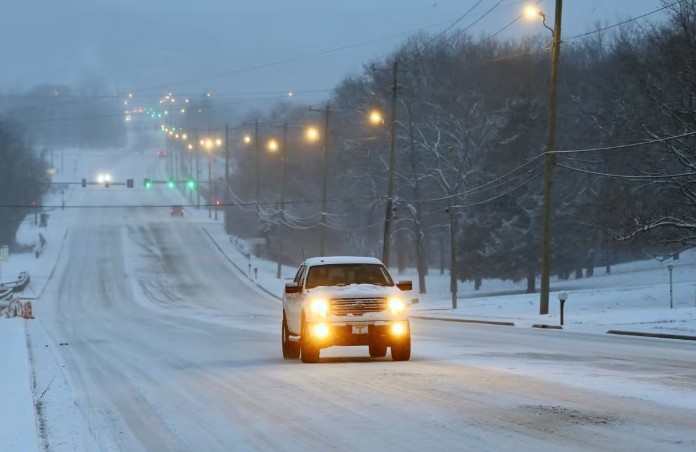How Many Homeless People Are There in the US Today?
Homelessness continues to be a significant and urgent social problem in the United States, impacting a large number of individuals and families throughout the country. To effectively tackle homelessness in the present context, it is crucial to have a sophisticated comprehension of the evolving patterns and a versatile strategy for policy-making and intervention.
As the causes of homelessness change, the methods to address it must also adapt. To effectively combat the rising rates of homelessness nationwide, it is crucial to prioritize sustained funding for affordable housing, healthcare, and comprehensive support services. Additionally, implementing creative policy measures is necessary to address this issue.
Learn more: How Many People Live in Poverty In the US Today?
 |
| How Many Homeless People Are in the US Today? |
History of Homelessness
The number of homeless people in the United States has gone up and down over time. The highest numbers were seen during the colonial era, the pre-industrial era, the years after the Civil War, the Great Depression, and now.
There are many things that make people homeless in the modern world, but a lot of them are policy failures, programs that aren't getting enough money, wages that aren't keeping up with rising rent and housing costs, not enough safety nets, unequal access to high-quality healthcare, especially mental health care, education, and job opportunities, and a lot of people being locked up. In fact, more than half of all Americans are living from paycheck to paycheck and are one emergency away from being homeless.
The main reason for these systemic flaws is racism, both in the past and the present. People of color and other groups that have been pushed to the edges of society in the past, like LGBTQI+ youth, have been denied rights and opportunities in ways that hurt them even now. These include things like the Indian Removal Act, slavery, and putting a lot of people in jail at once.
How many are homeless in America?
Currently, homelessness continues to be a pressing problem throughout the United States, as recent data emphasizes the ongoing challenge that many Americans face in obtaining secure and safe housing. As per the latest Annual Homeless Assessment Report (AHAR) to Congress by the U.S. Department of Housing and Urban Development (HUD), there are around 653,104 homeless individuals across the country, showing a small rise compared to previous years.
Which cities currently have the highest rates of homelessness?
The Continuums of Care (CoCs) with the highest number of homeless individuals among the 50 largest cities in the United States were New York (88,025) and Los Angeles (71,320), which were also the most populous cities overall.
The population of each Community of Concern (CoC) varies depending on the specific areas it encompasses. Government agencies do not directly supply data on the population of CoCs. For example, the New York City CoC represents the five boroughs of New York City, which had a population of 8.3 million people in 2022. Except for Long Beach, Pasadena, and Glendale, the Los Angeles City and County Continuum of Care (CoC) includes 85 out of the 88 cities in Los Angeles County. The estimated population of these regions in 2022 was 8.9 million. The data indicated that there were 106 homeless individuals per 10,000 inhabitants in the City and County of New York, and 78 in the City and County of Los Angeles.
In 2023, a minimum of 1,000 individuals without permanent housing were identified in each of the 49 major cities Continuums of Care (CoCs), with 46 of these cities reporting the same.
| City | Homeless population | |
|---|---|---|
| 1 | New York City | 88,025 |
| 2 | Los Angeles City & County | 71,320 |
| 3 | Seattle/King County | 14,149 |
| 4 | San Diego City and County | 10,264 |
| 5 | Metropolitan Denver | 10,054 |
| 6 | San Jose/Santa Clara City & County | 9,903 |
| 7 | Oakland, Berkeley/Alameda County | 9,759 |
| 8 | Phoenix, Mesa/Maricopa County | 9,642 |
| 9 | Sacramento City & County | 9,281 |
| 10 | San Francisco | 7,582 |
Who is Homeless: Based on Gender
Gender is a significant determinant to take into account. Men, constituting 68% of the overall population and outnumbering women significantly, represent a larger percentage of the homeless population, including both adults and children. Concerning certain individuals in America, there exist significant systemic deficiencies that indicate deficiencies in the social welfare system, issues with support systems, and barriers to finding housing again.
Meanwhile, a significant portion of the homeless population consists of women (both single and in families with children), as well as individuals who identify as transgender, nonbinary (as defined by HUD as "not exclusively female or male"), and questioning (refer to the visualization below). They possess specific requirements and challenges that must also be addressed.
Scope of Homeless Crisis
Homelessness impacts all states across the country, but it is particularly severe in urban regions with the highest housing expenses. California, New York, and Florida have some of the highest numbers of homeless individuals due to the confluence of expensive living expenses, a scarcity of affordable housing, and inadequate mental health resources.
Metropolises such as New York, Los Angeles, and San Francisco exhibit the most significant concentrations of homeless individuals. Los Angeles alone has a staggering number of over 66,000 individuals who are currently facing homelessness, which serves as a clear indication of the severe housing crisis that California is currently grappling with.
Drivers of Homelessness
The reasons behind homelessness are multifaceted and complex. Major contributing factors include:
Affordability: The most significant driver is a lack of affordable housing. Rent prices continue to rise, particularly in major cities, leaving more individuals and families unable to afford housing.
Income Inequality: Economic disparities play a critical role. Low-wage workers often struggle to cover basic living costs, pushing them toward homelessness.
Mental Health and Substance Abuse:The problem is made worse by limited access to treatment for mental health disorders and drug addiction, since those who leave these problems untreated are more likely to lose their homes.
Systemic Failures: Systemic problems are also present, such as the foster care system's shortcomings and the lack of support for veterans, which leave vulnerable populations without a safety net.
Natural Disasters and Climate Change: The heightened frequency of natural disasters resulting from climate change has directly contributed to the recent surge in homelessness. Hurricanes, wildfires, and floods have caused significant damage to homes and communities, particularly impacting low-income families who may lack insurance coverage or the means to rebuild. These calamities often lead to both immediate and prolonged displacement, which exacerbates homelessness and underscores the necessity for prompt support systems, such as housing aid, and preparedness for disasters.
Addressing the Crisis: Solutions and Strategies
In an attempt to end homelessness, various governmental and non-governmental tactics are used:
Increasing Affordable Housing: Many people believe that the most effective approach is to simply increase the availability of affordable housing. One promising approach is the implementation of "housing-first" programs, which prioritize the provision of permanent housing for the homeless over addressing other issues such as mental health or substance abuse.
Enhanced Support Services: Enhancing healthcare accessibility, particularly for mental health and addiction treatment services, is of utmost importance. Individuals have discovered that comprehensive support programs have proven effective in assisting them to achieve stability in their lives.
Policy Initiatives: Regarding policy, housing vouchers and rent control programs are crucial for aiding low-income families in affording housing. Education and training programs in the workplace are crucial for enhancing individuals' capacity to earn more and achieve greater financial stability.
Community Involvement: Local communities play a pivotal role. Volunteerism and local non-profits are at the forefront of providing immediate assistance and advocacy for policy changes.
Conclusion
Homelessness in the United States necessitates ongoing focus and intervention from all segments of society. The resolution of this crisis necessitates a multifaceted approach that encompasses the augmentation of affordable housing, the provision of comprehensive support services, and the implementation of efficacious policies.
Through the examination and resolution of the fundamental factors contributing to homelessness, coupled with the implementation of all-encompassing and empathetic measures, there exists a glimmer of optimism regarding the potential for a future in which every individual possesses a permanent dwelling.
Veterans and more kids were becoming homelessHUD predicts that in 2023, the number of homeless families with children, veterans, and unaccompanied youth will increase. Since 2022, the proportion of homeless families with children has risen by more than 15%. HUD asserts that the increase was almost entirely the result of families who were able to access shelters for the homeless. The percentage of veterans experiencing homelessness increased by over 7% following some of the steepest declines in American history. The percentage of homeless veterans fell by more than 11% between 2020 and 2022. HUD reports that in 2023, unaccompanied youth who were 24 years of age or younger made up 22% of all homeless youth. Since the previous year, there has been a 15% increase in the number of homeless and unaccompanied youth, with increases observed in both sheltered and unsheltered youth. The groups most likely to face youth homelessness are LGBTQ+ youth and foster children who age out of the system without permanent housing. |
 Top 10 Safest College Campuses In The US Today Top 10 Safest College Campuses In The US Today Safety may connote police cars and uniformed security, but it also includes a variety of student health, wellness, and security concerns. Check out the top ... |
 Top 10 Largest Companies In Australia By Market Capitalization Today Top 10 Largest Companies In Australia By Market Capitalization Today The precise companies that comprise Australia's top 10 can be difficult to quantify, but the influence these companies have on the country's economy can. Based ... |
 Top 10 Largest Companies In Asia By Market Capitalization Today Top 10 Largest Companies In Asia By Market Capitalization Today In an impressive display of market strength and corporate influence, Asia's top ten companies have set new benchmarks in 2024, solidifying the region's position on ... |
 Top 10 European Countries with the Largest Economy by GDP Today Top 10 European Countries with the Largest Economy by GDP Today As Europe continues to navigate through economic challenges and opportunities, the continent remains a significant player on the global economic stage. Here’s a detailed look ... |


























